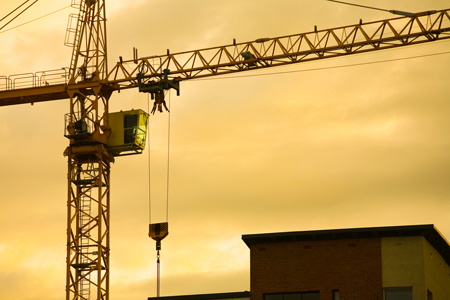 The following article was sent to Construction Citizen from LC Crane Parts & Service, a mobile crane parts and repair services company outside of Atlanta.
The following article was sent to Construction Citizen from LC Crane Parts & Service, a mobile crane parts and repair services company outside of Atlanta.
Hurricane season is in full swing, and this leaves a lot at stake for the crane industry. Surprisingly enough, rain is actually the most hazardous part of a hurricane—not wind. Most hurricane deaths are flood-related, and happen during recovery and cleanup due to slips and falls, car accidents, falling tree limbs, and improper generator usage.
Fortunately, these disasters do not come without warning, and typically allow for roughly a week’s worth of preparation time. Check out the following tips to learn more about how you can protect your worksite in the event of a hurricane.
Worksite Preparation
While you may not currently be expecting a hurricane, its impacts can still be felt hundreds of miles away from its center, and the best time to start preparing is before one has developed. You should create several different plans for varying time frames, such as collecting emergency supplies as soon as hurricane season starts, and having 12-hour 24-hour, 2-day, and 3-day checklists ready for when the next hurricane is on its way. In order to prepare your worksite, here’s what you need to do:
- Make sure all hazardous chemicals are in a safe place
- Shield your current work by boarding windows, capping pipes, and sand-bagging
- Turn off all gas, water, and power sources
- Cover any loose dirt with tarps
- Put away all scaffolding planks
- Move any debris or scrap materials that could turn into projectiles
- Cover all dumpsters with nets or empty them if needed
- Band together any necessary materials like lumber
- Take note of the worksite’s condition before the storm (with pictures)
- Make sure that all of your pumps and generators are in good condition to remove water if necessary
- Load and lay down your crane booms if possible
- Move heavy equipment to a safe, elevated space if possible
- Move small equipment in low areas to a safer place
- Protect any piping or exposed storm drains from sand and dirt
- Make sure that your computer is backed up and move any physical documents to a place where they can be guaranteed to stay dry
- Anchor any port-o-potties, trailers, or storage sheds
What to do After the Storm
Once local officials have announced that it’s safe to return to your worksite, make sure you do so with caution. Be on the lookout for standing water and debris (wear protective clothing to be safe), damaged buildings, and downed power lines. After you’ve thoroughly inspected your worksite, take note of any damage that has occurred and start planning the repairs.
At LC Crane Parts & Service, we hold the safety of our workers and cranes to the highest regard. While we hope to avoid any hurricanes this season, it can’t hurt to be prepared. If you have any further questions regarding the safety of your equipment and worksite, don’t hesitate to contact us!


